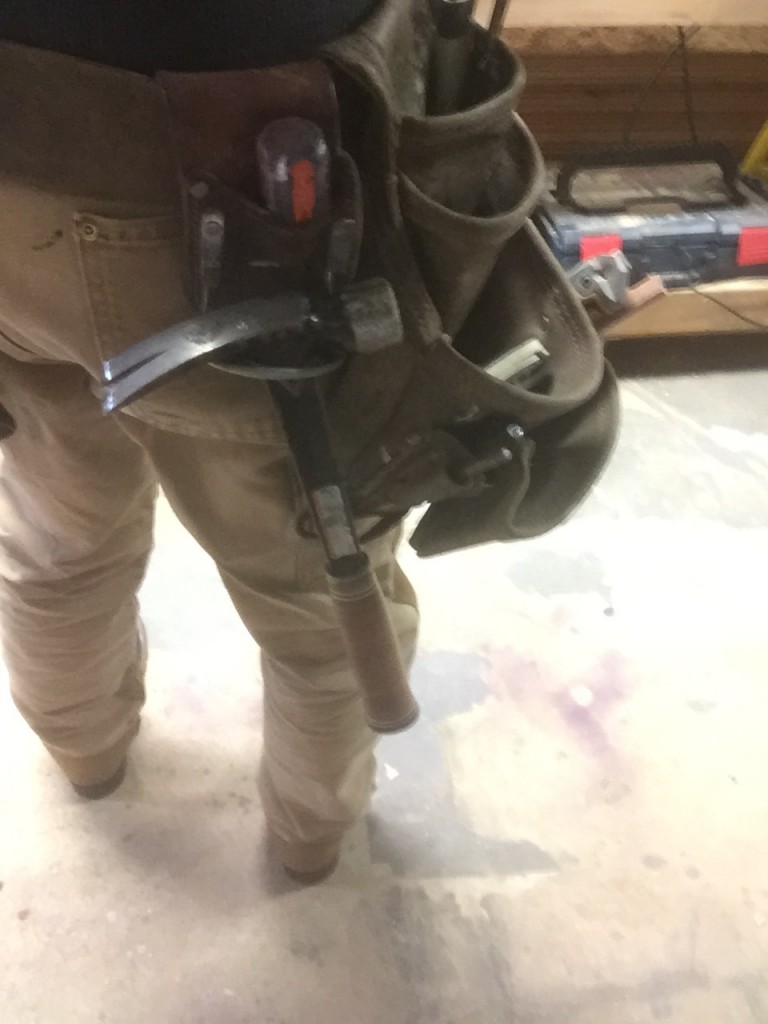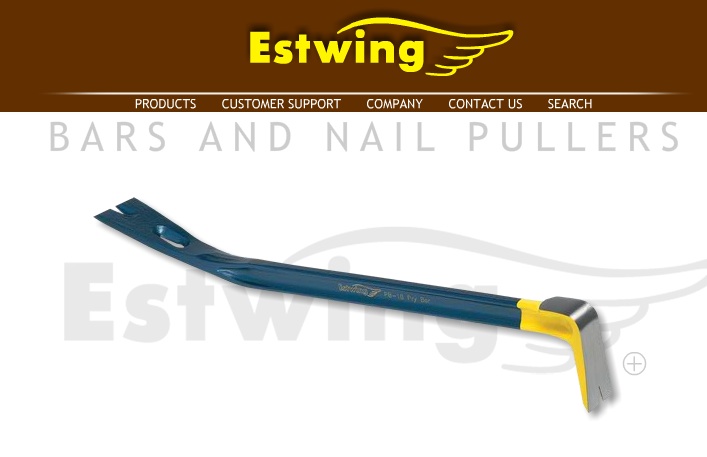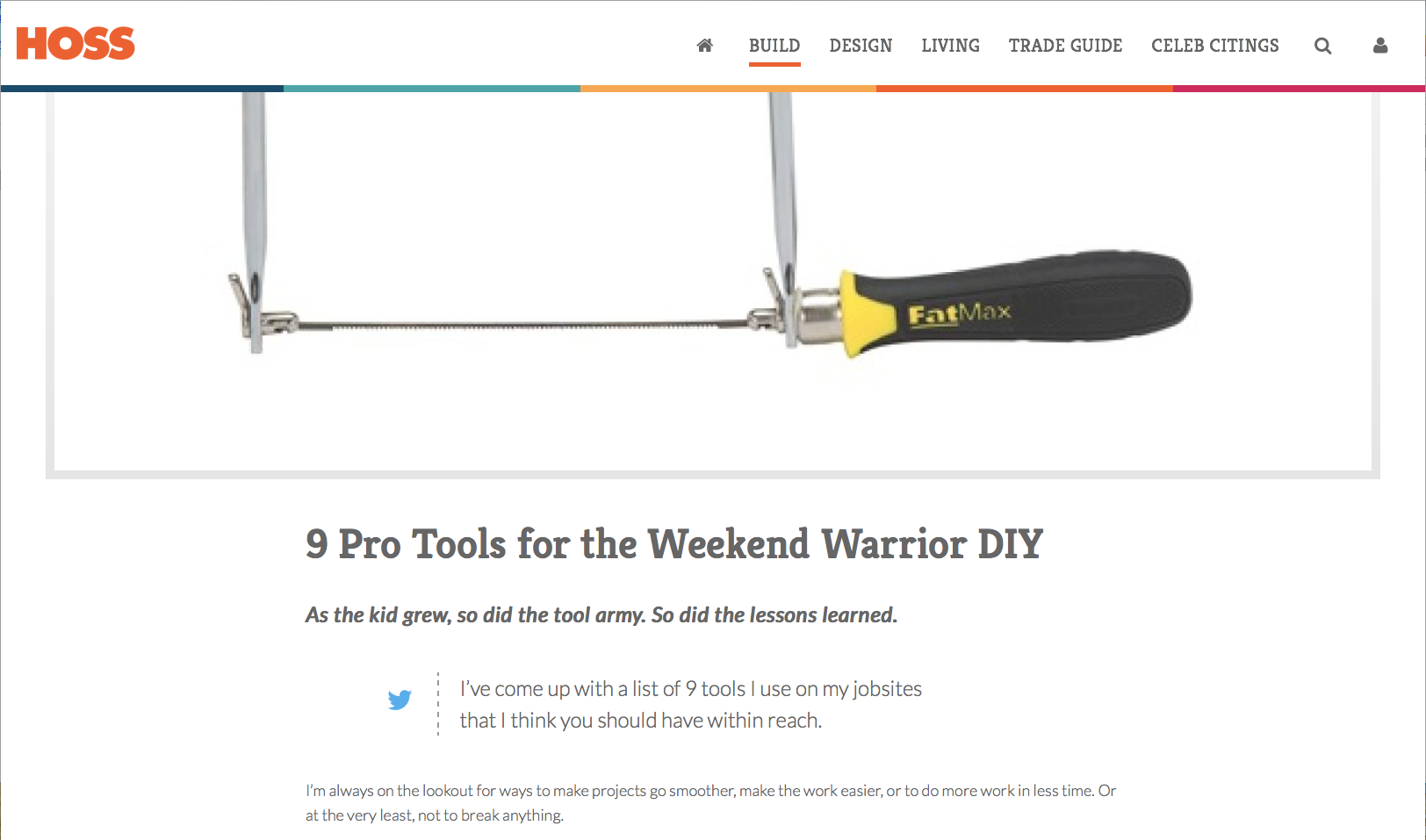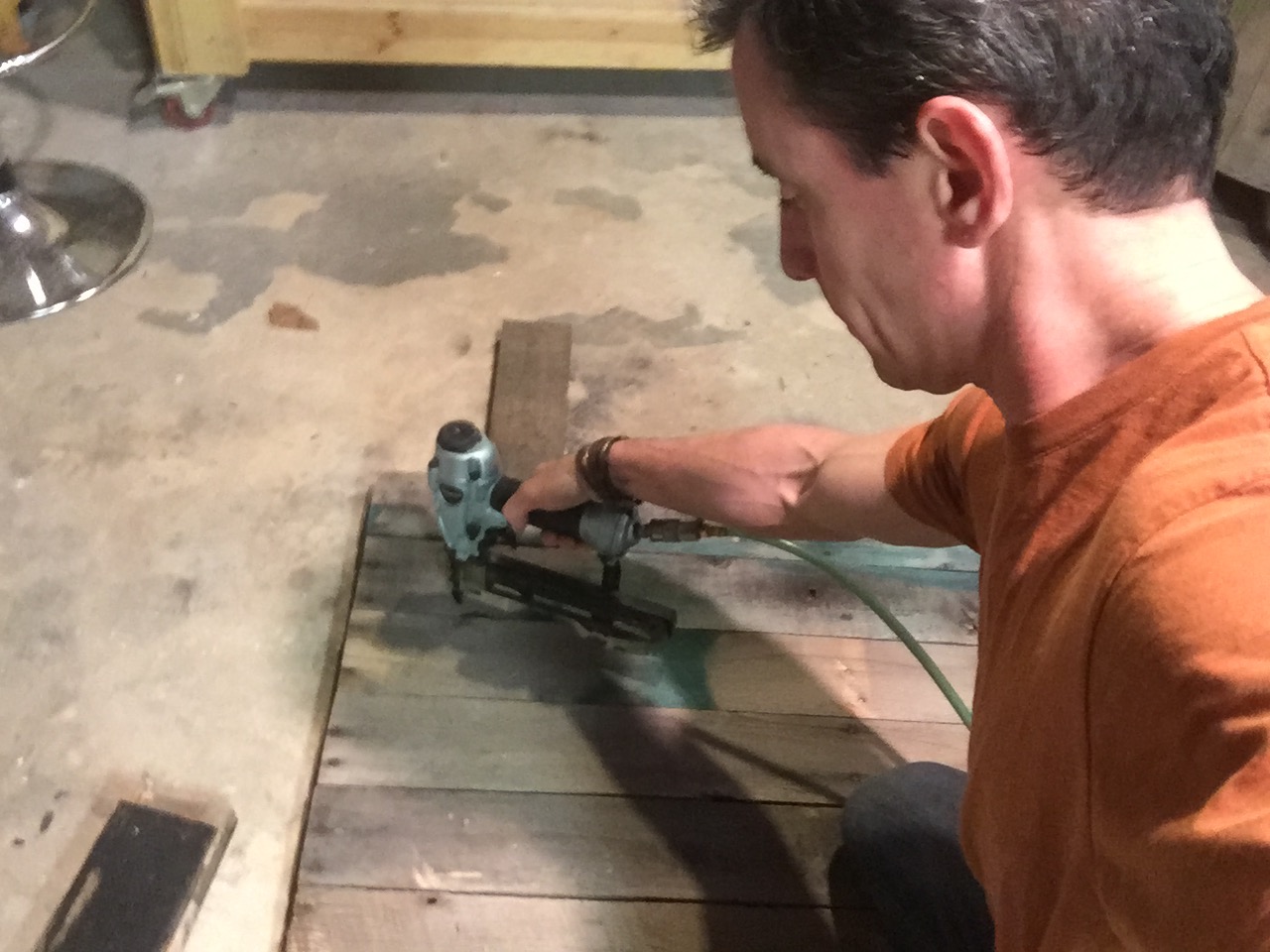When it comes to hammers, there’s a best hammer for how you work. Here’s my pick for a professional remodeler.

MyFixitUpLife, I want to talk tools. Specifically, hammers. I’m a professional remodeler and it’s been a long time since I bought a new hammer. What are you using these days? Is it a ‘best hammer? Or just one you like? Thanks, -AC
AC—
I’m a hammer geek. And for a pro, I think this is a great question. DIYers listen up too.
Unless you’re just hanging pictures and whacking down a few deck nails, a hammer is not—and should not—be a cudgel.
The best hammer is a (sort of) precision assembly and disassembly tool with subtle design features that will help you do your work better. Don’t believe me, check out the effort Jimmy DiResta and Chip Wade give their set-ups in this tool video.
I’m presently toting a 19-ounce Estwing Ultra Series with a throwback leather handle and I cannot lie, I’m loving it.
It’s one-piece steel construction like we expect from Estwings. I had my last Estwing for a preposterously long time. This one seems similarly durable, and light years better than my E-20. Here’s a breakdown on this Estwing Ultra hammer review.
The claw
First and foremost, the Estwing Ultra’s claw. This is a nexus where tools and how-to smash into each other with blunt-force-awesome.
A hammer is a main frame demo tool for me, whether that’s punching in through a hunk of drywall so I can hook my hammer behind it and pull or to wedge carefully behind at piece of trim—or even under a door to keep it still.
The best hammer has a claw with a shallow fetch. Opposite of a curved claw hammer by contrast, a claw with a shallow fetch is more like a blade than a claw. A good one enables me to pierce which is what you need to get started most un-building projects and it’s impossible with a deep fetch.
Sized
The Estwing is also right-sized for remodeling, which is what I do too. Reno is a great proving ground for tools and how to do better work in challenging environments and it’s hard not to think of the master, Tom Silva when typing this.
Not too long and not too short, I’ve used larger, more expensive (titanium head, hickory handle) hammers and they’re great for remodeling. I honestly love them—yet they’re proportionally lighter and more expensive. And I’ve reviewed many hammers.
Power
The Estwing hits hard. The head is suitable for whacking spikes for toe-nailing framing (97% of the nails I drive come out of a gun), small enough to tap in a few finish nails and gnarly enough to blast whatever needs blasting. And tough enough to pull nails without bending or breaking.
And the tool steel is engineered to be light without being weak, 19 ounces or so delivers a big wallop. It doesn’t matter so much swinging the hammer as it does tugging at my back all day in my tool pouch. I can feel the difference a lighter hammer makes.
Handle
I also dig the throwback leather handle. It’s smooth (slick with a finish when you first get it; that wears off) and isn’t grinding skin off my hands like a rougher, rubber handle if I have to use it a lot. The Estwing handle bumps on the floor when I kneel down sometimes. That has as much to do with where I keep it—on the back of my right hip—than the hammer length itself. Also, after breaking a wood handle, I got busy and never replaced it. Busy may mean lazy. Either way….
Hope this Estwing Ultra hammer review helps.








Hey, I’ve heard the leather-handled ultra has a steel cap at the end which can come loose and rattle. Have you found this to be the case for yourself? How long have you been using it also?
Don’t know about the Ultra.
Wood handles can expand and contract with humidity. This head wiggled a little. Wasn’t a big deal for me.
Been using it about a year.
The head broke recently. Totally worth replacement cost.
Maybe this video on how to snug up a hammer head would help. https://youtu.be/mt9bOBDIrJ4
Erik—I’ve been on a titanium kick for a while so I don’t know what Estwing has had for the last few years in the Ultra series. I do know what I’ve seen in the stores as I walk by is the same Estwing architecture its been since the Egyptians were using them. An indestructible hammer, but heavy and not built for how I use it. This one (the handle may look similar to a traditional Estwing, but the business end is all new) is significantly improved with the chisel-style claw that makes all the difference to me.
Just curious if you have anymore pictures of this hammer? I’m considering buying this one. I had an ultra series hammer before but didn’t like it because the head was shaped differently then this one.. Yours is a more sharper head vs mine which was a more curved style.. Any thoughts on why this was?